Nature overshadows the human world
Once in a while I’ve shown the intersection between the natural and man-made worlds. Today’s abstract photograph from October 29th does that, but only tentatively from the side of nature, which is represented here by shadows of branches and vines and leaves rather than by those things themselves. Standing in—again indirectly—for people is the wall of a culvert that channels a tributary of Bull Creek under Floral Park Dr.
© 2015 Steven Schwartzman

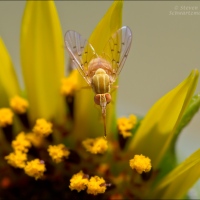
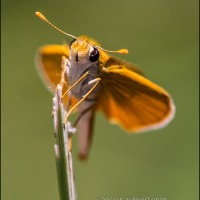

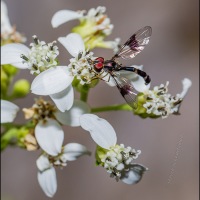
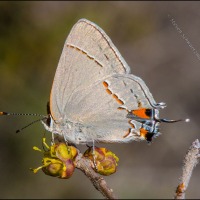
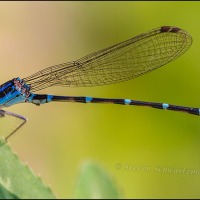

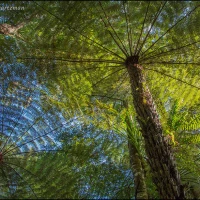

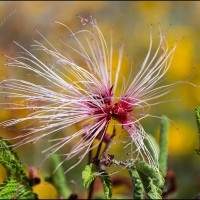
Una bonita abstracción. Felicidades!
Isabel F. Bernaldo de Quirós
November 8, 2015 at 11:44 AM
Gracias, Isabel. He mostrado varias abstracciones aquí, pero ésta es diferente porque no se ve directamente ninguna planta.
Steve Schwartzman
November 8, 2015 at 12:17 PM
Interesting and thought provoking.
Raewyn's Photos
November 8, 2015 at 1:07 PM
Thanks, Raewyn. I’m happy to provoke thought.
Steve Schwartzman
November 8, 2015 at 1:13 PM
Very nice abstract Steve! I really like it! The texture makes it look almost like an oil painting!
Michael Glover
November 8, 2015 at 2:34 PM
The texture of the cement (or concrete, I don’t know which it is) intrigued me, but I never thought about comparing it to the surface of an oil painting. I like your suggestion.
Steve Schwartzman
November 8, 2015 at 5:22 PM
I’m completely taken with this one. The texture reminds me of coarse linen, and the shadows have created the effect of draped fabric. I never would have imagined that concrete could look so fluid, or so lovely.
shoreacres
November 8, 2015 at 9:04 PM
I was taken with this too, first because of the shadows (I’m a sucker for shadows) and then because of the texture of the concrete, which you saw as coarse linen. Water was flowing in the creek, and you’ve transferred that unseen fluidity to the concrete. To the left of the strong diagonal line, some of the light areas are due to sunshine reflecting off that water in that creek to create a shimmering on the concrete.
Steve Schwartzman
November 8, 2015 at 9:34 PM
Lovely texture.
Lynda
November 8, 2015 at 11:33 PM
That word just reminded me that when I was in elementary school I remember learning that a certain state was known for its textiles, but I didn’t know what textiles are.
Steve Schwartzman
November 9, 2015 at 3:38 AM
Funny how we learn about words. When I was very young, I once remember my parents spelling out “s-e-x”, and I piped up with, “I know what that is!” they looked aghast… until I stated, “That’s spelling!”
I’m sure you looked up textiles. It would be several years before I learned what my parents’ word referred to. 😉
Lynda
November 9, 2015 at 8:43 AM
That’s a good story. I can’t remember how I finally learned what textiles are, nor do I know why our teacher(s) hadn’t explained it.
Coincidentally, I just realized that the words sex and textiles both have an ex in them. Maybe some hanky-panky was going on in a dark corner of the cloth factory.
Steve Schwartzman
November 9, 2015 at 8:55 AM
You never know…
Lynda
November 9, 2015 at 9:05 AM
[…] site of today’s photographs was no more than 30 feet from the culvert you saw in yesterday’s abstractly shadowed picture, which I took two days […]
A different kind of camouflage | Portraits of Wildflowers
November 9, 2015 at 4:51 AM
The comments on texture and textiles reminds me that hessian or sacking were (maybe still are) important parts of good concrete work.
Gallivanta
November 9, 2015 at 6:53 AM
I looked up hessian and found in the Collins Dictionary that it’s ‘a coarse jute fabric similar to sacking, used for bags, upholstery, etc.’ Presumably the Hessians who served in the British army wore clothing made with that fabric. Another dictionary indicated that the lower-case hessian is primarily a word of British English, which probably accounts for your knowing and using it in New Zealand.
Steve Schwartzman
November 9, 2015 at 7:23 AM
Hessian is a pleasant sounding word. I wouldn’t like to wear it as a soldier unless it was a very fine hessian. I don’t know how many in NZ would still use the word hessian or even know what it is. My mind happened to be on hessian/sacking before I read your post because I had just discovered two of my aunt’s old hessian oven cloths. The oven cloths are in much better condition than this museum item http://www.nzmuseums.co.nz/account/3045/object/96317 , and I intend to use them. They are brilliant and very fit for purpose, unlike some modern oven cloths which are mainly intended as decorative features for the kitchen as far as I can tell.
Gallivanta
November 9, 2015 at 7:52 PM
All I can say about your plan to use those recently discovered oven cloths is Bon appétit. We still remember your yummy cooking.
Steve Schwartzman
November 9, 2015 at 10:49 PM
It was a pleasure to cook for you.
Gallivanta
November 10, 2015 at 2:10 AM
As it was to be catered to.
Steve Schwartzman
November 10, 2015 at 6:34 AM
This is an outstanding abstract, Steve. Such a fine collection of line, texture and layering to explore.
I actually did something similar today but no concrete.
Steve Gingold
November 9, 2015 at 6:56 PM
Thanks, Steve. This image is about as far as I stray in this blog from nature per se. Not everyone will appreciate this much of a deviation, but I’m not surprised that as a photographer you do.
Steve Schwartzman
November 9, 2015 at 7:24 PM
[…] coincidence, I happened to make this image while at Quabbin yesterday and later saw Steve’s post of a similar […]
11.10.2015 Shadowplay and Vine | Stephen Gingold Nature Photography Blog
November 10, 2015 at 4:25 AM
Excellent composition here, Steve. Of course it has to be if you are taking the shot. 🙂 Perfect combination of light and dark. I like how the two quadrilaterals are placed with one being a little smaller than the other.
Jane
November 10, 2015 at 11:11 PM
You made my mathematical day with your mention of the different-sized quadrilaterals in this view. We could even get a couple of degrees more specific and call the geometric figures right-angled trapezoids, thereby adding further mathematical abstractions to the photographic one that this image is.
I just searched the comments on this blog and found you’re the first person ever to leave one that includes the word quadrilateral. I’d used the term in connection with the scientific name of a wildflower:
https://portraitsofwildflowers.wordpress.com/2012/07/27/a-tetragon-is-a-quadrilateral/
Steve Schwartzman
November 11, 2015 at 8:41 AM
Well I did have to teach my three children mathematics right up to university so quadrilaterals are a word I used often. I still remember when they were very young, drawing a funny creature inside a trapezoid and saying this is how to trap a “zoid.” Now I wish I’d commented in more specific terms as I wonder how excited you would have been then. 🙂 I am delighted to be the first person to use the word quadrilateral. The fact that you searched your comments to see if anyone else had mentioned quadrilaterals makes me smile. You are very passionate about the subject! And now I have mentioned the word twice more and also added trapezium. I’m just making sure no-one beats me. 😉
Jane
November 11, 2015 at 4:18 PM
Trapezium is an ambiguous word. One dictionary that I consulted gives three definitions:
a. any rectilinear quadrilateral plane figure not a parallelogram.
b. a quadrilateral plane figure of which no two sides are parallel.
c. a quadrilateral plane figure having two parallel and two nonparallel sides.
The word trapezoid is also ambiguous. I wish English-speaking mathematicians would get together and come up with a set of mutually exclusive words for those shapes.
That’s a good story you told your kids: “I still remember when they were very young, drawing a funny creature inside a trapezoid and saying this is how to trap a ‘zoid.’ ” When it came to tangents, did you draw a picture of a tan gent?
Steve Schwartzman
November 11, 2015 at 5:26 PM
A “tan gent”, now why didn’t I think of that? 😉
Jane
November 12, 2015 at 5:39 AM
And then there’s that old joke I remember from childhood: What do you call a dead parrot? — A polly gone.
Steve Schwartzman
November 12, 2015 at 6:15 AM
I remember that one too. 🙂
Jane
November 12, 2015 at 6:16 AM
And then there was the little boy at school who was roundly kissed during a lesson on conic sections by the mischievous girl sitting next to him. He cried out: “Eeeeeh! Lips!”
Steve Schwartzman
November 12, 2015 at 6:30 AM
Now that’s a new one for me to use next time I tutor someone. I can just imagine the look I’ll get. Thank you for the mathematics humour, Steve. And people complain it’s boring! Little do they know… 🙂
Jane
November 12, 2015 at 6:35 AM
Just imagine the look you’ll get if you play the part of the little girl and enact the scenario. What eccentricity! But we’d better not focus on that.
Steve Schwartzman
November 12, 2015 at 6:42 AM
Here I am trying to catch up on my reading. This abstract is wonderful! …I always suspected that studying ellipses could lead to trouble! 🙂
Melissa Pierson
December 15, 2015 at 5:31 PM
Studying ellipses leading to trouble? Never!
Steve Schwartzman
December 15, 2015 at 10:52 PM